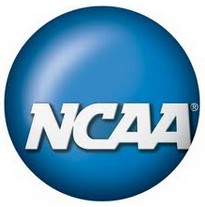CONTACT:
Marty Maciaszek, NSGA Team Dealer Director
mmaciaszek@nsga.org
(847) 296-6742, ext. 1260
INDIANAPOLIS, INDIANA (April 18, 2018) – The annual National Federation of State High School Associations (NFHS) and NCAA Rules Conference is an opportunity to learn more about impending or potential rule changes related to uniforms and equipment. Here are some of the highlights from the April 17 meeting in Indianapolis:
Football
There are issues with high school jerseys and game administration that will be addressed within the next year, according to NFHS Director of Sports and Sports Medicine Bob Colgate. One is with the difficulty of distinguishing between the Vegas Gold color used in home jerseys and white used in away jerseys.
Colgate said the NFHS Football Rules Committee wants plain, solid numbers on jerseys so fans, coaches, officials and media can see the numbers better. Getting helmet chin strap buckles changed from metal to a safer product is also a priority. Pants must completely cover the knees.
Colgate said overall football participation will likely be down again when the 2017 figures come out in August and numbers in 11-player continue to drop. There has been an uptick in the 6-, 8- and 9-player participation numbers.
Baseball
A reminder that the new NOCSAE standard to be used for NFHS baseballs goes into effect Jan. 1, 2019. The new standard for NFHS chest protection to prevent commotio cordis goes into effect Jan. 1, 2020.
NFHS is still looking at sensor technology in bats to get a better understanding, according to NFHS Director of Sports, Sanctioning and Student Services Elliot Hopkins. The technology is OK for use in practice but not in games. Hopkins also said South Dakota is interested in sanctioning baseball (it currently has no state series) and Massachusetts has adopted NFHS baseball rules.
Two NCAA rules related to bats go into effect Sept. 1, 2019. Baseball barrel bat testing requirements start for Division I with the 2020 season (Divisions II and III in 2021) and the barrel design must be a contrasting color to the ball. NCAA assistant director Ben Brownlee said diagrams for the predominant/contrasting colors should be finalized in July.
Brownlee also said there is an increasing interest in use of technology without damaging the pace of play and integrity of the sport.
Softball
For the 2018 season, NFHS addressed the use and placement of the wristband playbook/play card and defined it as a piece of equipment and not a garment. They are worn on the forearm and not required to adhere to color restrictions. It is also the coach’s responsibility to verify players are legally equipped – including all bats and helmets used in the game.
Defensive facemasks continue to be permissible, but NFHS Director of Sports Sandy Searcy said an upcoming issue that will be addressed are tinted eye shields with the facemask. There is currently no rule prohibiting tinted eye shields but there is a proposal for a rule to be consistent with no tinted eye shields allowed on batting helmets or catcher’s gear.
In early April, Montana mandated pitchers and first and third basemen wear a protective mask, which is a single solid color (excluding padding) and unadorned, starting with the 2018-19 season. Kentucky has a similar rule for pitchers and corner infielders and Missouri requires pitchers to wear face protection and urges it for corner infielders.
Searcy said a rule allowing uniforms to have only the school name, school nickname, school logo or player’s name will probably be implemented in the next two to three years.
There is also no push to develop NOCSAE standards for softballs or chest protectors for commotio cordis for NFHS softball.
“Softball has not experienced the same issues baseball has at this point,” Searcy said of a need to develop more consistency with the construction of balls for game use, “or received any complaints from state associations.”
Changes to the certification marks on bats and softballs are also expected from USA Softball as part of its re-branding from Amateur Softball Association (ASA) of America/USA Softball. The new bats would be allowable for use in 2019 and required for use on 2020 models, with bats with the old mark grandfathered, according to USA Softball Director of Umpires Kevin Ryan.
Ryan said USA Softball hopes to have the same time frame and conditions with the use of the new mark on softballs.
Two NCAA rule changes took effect with the 2018 season via delayed implementation. Foul poles must be white or fluorescent orange and there must be protective fencing or netting in front of dugouts.
The NCAA allows an adjustable knob and data sensor on the bat. NFHS will make change to its rules to add the word “adjustable,” although that is currently allowable, but sensors are not allowed in the knob.
Wrestling
NFHS’ Elliot Hopkins said the two-piece alternate uniform “saw a tremendous response across the country” but he doesn’t anticipate it being mandated. Hopkins said it will continue to be offered as an alternative to the singlet.
“We saw some beautiful uniforms that were artistic and attractive,” Hopkins said.
Hopkins also reiterated that beyond the one manufacturer’s logo or trademark, no promotional items are allowed on uniforms. That includes any company logo that may fit with a school nickname, anything with USA Wrestling or for some type of cause. They also must be school-issued uniforms.
Ten states will offer girls-only state championships in 2018-19 and Hopkins expects another 5-to-10 states to add girls wrestling in subsequent years. Overall numbers have declined from by more than 20,000 since 2013-14 to 259,391 in 2016-17.
“If it weren’t for the girls those numbers would be more dismal,” Hopkins said. “The young ladies participating will increase. Girls want to wrestle other girls.”
Hopkins said the other significant issues facing NFHS wrestling are kids wrestling too much during the high school and club seasons, a lack of wrestlers at certain weights (particularly 106 and 285 pounds) and skin infection/hygiene issues. All of these could also impact participation.
The NCAA’s delayed implementation of all mats complying with ASTM standards goes into effect with the 2018-19 season.
NOCSAE
The revision to the football helmet standard, with pass-fail testing for rotational acceleration, goes into effect in November. NOCSAE Executive Director Mike Oliver emphasized that does not make football helmets currently in use or that were manufactured before November obsolete. Oliver said NOCSAE is trying to make the point clear to schools and organizations.
“It’s possible models in the field today will meet the revised standard,” Oliver said.
Oliver said the NFHS baseball standard, which essentially mimics the Major League Baseball standard, could be moved from a January 2019 implementation to February. The NFHS standard regulates weight, mass, size and hardness of the baseballs.
“We’ve had a baseball standard for a long time but it’s historically been a safety-ball standard,” Oliver said. “We’re trying to bring some consistency of play.”
The chest protector standard for commotio cordis for baseball and lacrosse goes into effect in January 2020.
“Several companies are working hard to get product ready,” Oliver said. “As soon as product is available I’m sure it will be incorporated into the rules of play.”
Oliver also said there are concerns with counterfeit lacrosse balls and said www.seinet.org has list of certified models.
Track and Field/Cross Country
NFHS Director of Sports Julie Cochran said there is no change likely from a traditional starter’s pistol to electronic devices but said it is a possibility down the road.
‘It’s a continued issue to go electronic,” Cochran said. “But there is nothing (proposed) to go completely to electronic devices. Is it a possibility? Yes, but we’re not there yet.”
Cochran also clarified there are no rules against reflective elements in uniforms. But she said there have been issues in Colorado with schools wearing uniforms that say “Throwers, Sprinters, Jumpers, etc.,” which is illegal. Cochran also said NFHS will define what constitutes a foundation garment in its rules book.
NCAA Associate Director Rachel Seewald said a rule change two years ago that, on any single day of competition, all team members’ uniforms must look alike, will continue to be enforced and isn’t going away.
“The intent is all members of the team should be recognizable as being on the same team,” Seewald said.
The regulation that curbing be in place Dec. 1, 2018 for indoor tracks was changed from all tracks to newly constructed or resurfaced indoor tracks.
NFHS and eSports
Mark Koski of NFHS said the organization has signed an exclusive agreement with playVs, a strictly high school based eSports company. Koski said he expects 18 to 20 states will compete in two different seasons for titles in the first year of eSports.
“I think we’ll get another million participants, all within the education system,” Koski said. “ESports is here and it’s a big thing.”





 Back
to News
Back
to News